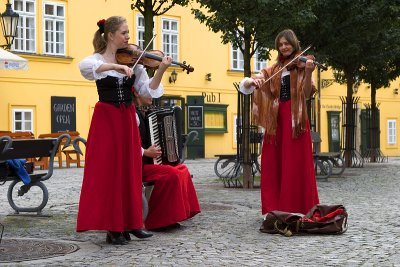Took me a day to find time to do this, but here the samples are.
RAWs can be downloaded here. Wide open, tripoded, OIS off, base ISO, whatever SS the camera picked. Camera was fired by 10s self timer using ES. Gray day but reasonably clear, just after 9 o'clock in the morning. Temperature -0.3 degrees celcius rising from -3-4 in the night. I estimate distance to be around 50 meters. Target is the lamp/alarm bell on the top of the building down my street which was just under the centre single focus point.
The slight softness and loss of contrast in the TC shot is what I'm reffering to as image degradation. This consistently reproduceable both on and off tripod and I see it all the time. Not surprisingly the lens without the TC, stopped down to F/8.0 improves quite a bit. With the TC from F/8.0 to 11 shows improvement as well, but the softness never really goes away. Also, the softness with the TC is most visible racked all the way out, it becomes slightly better in the 100-300mm range. This mirrors the behavior of the lens without TC. Nothing shocking or groundbreaking, long zooms are almost always this way.
While the degradation of IQ with TC might not be an issue unless printing big, it does become an issue in web sizes when major crops are made. However, I remember your inspiring birding work from many years back when I was a Nikon shooter and I'm sure you'll be able to squeeze out excellent images of this combo as well.
RAWS:
TC
https://www.falkphoto.no/_3017885.RAF
No TC
https://www.falkphoto.no/_3017887.RAF
Screenshot of 100% views in Capture One. The 1.4x shot have had its brightness reduced by a bit to roughly equalize the exposures. Default C1 v11.3.1 sharpening and pic profile.









